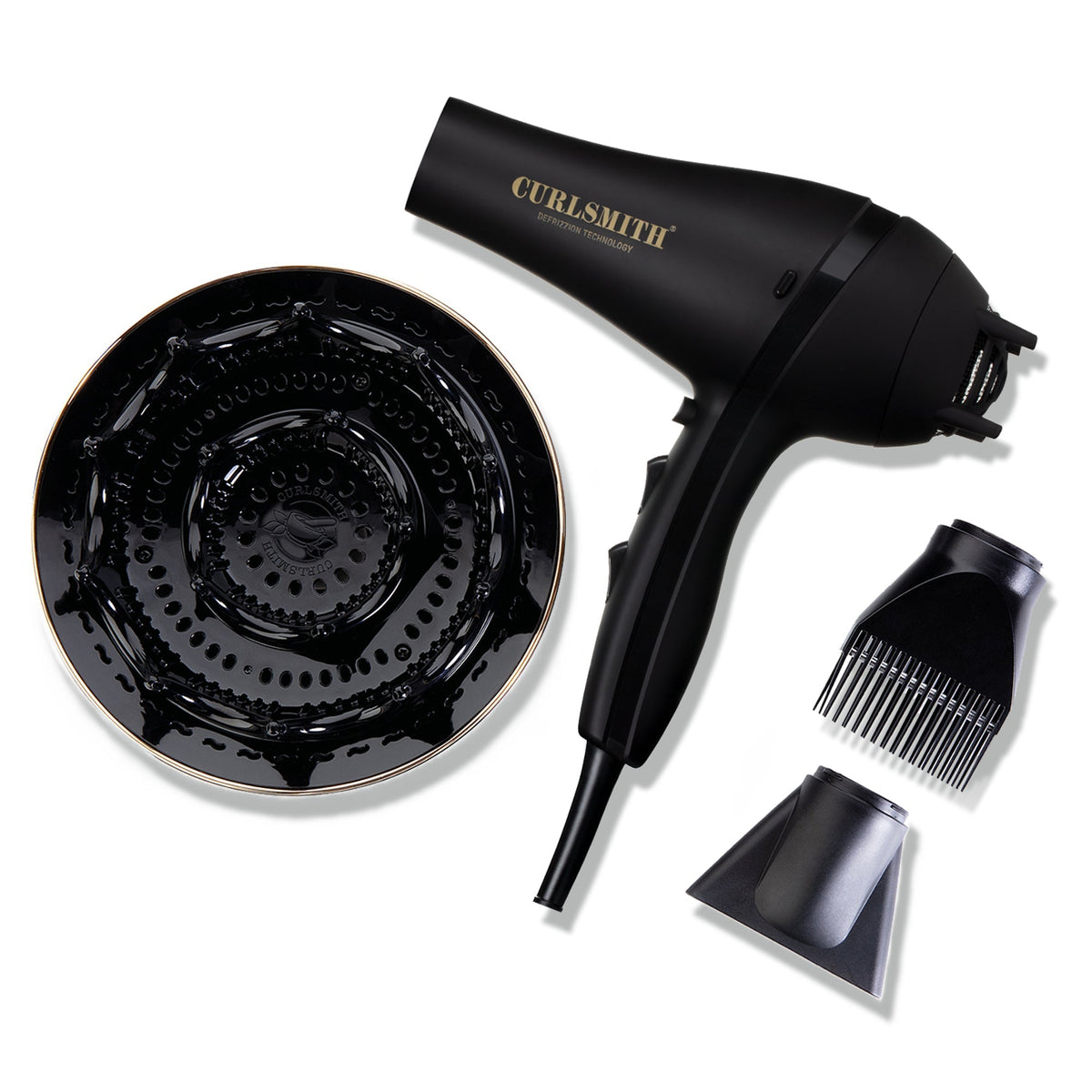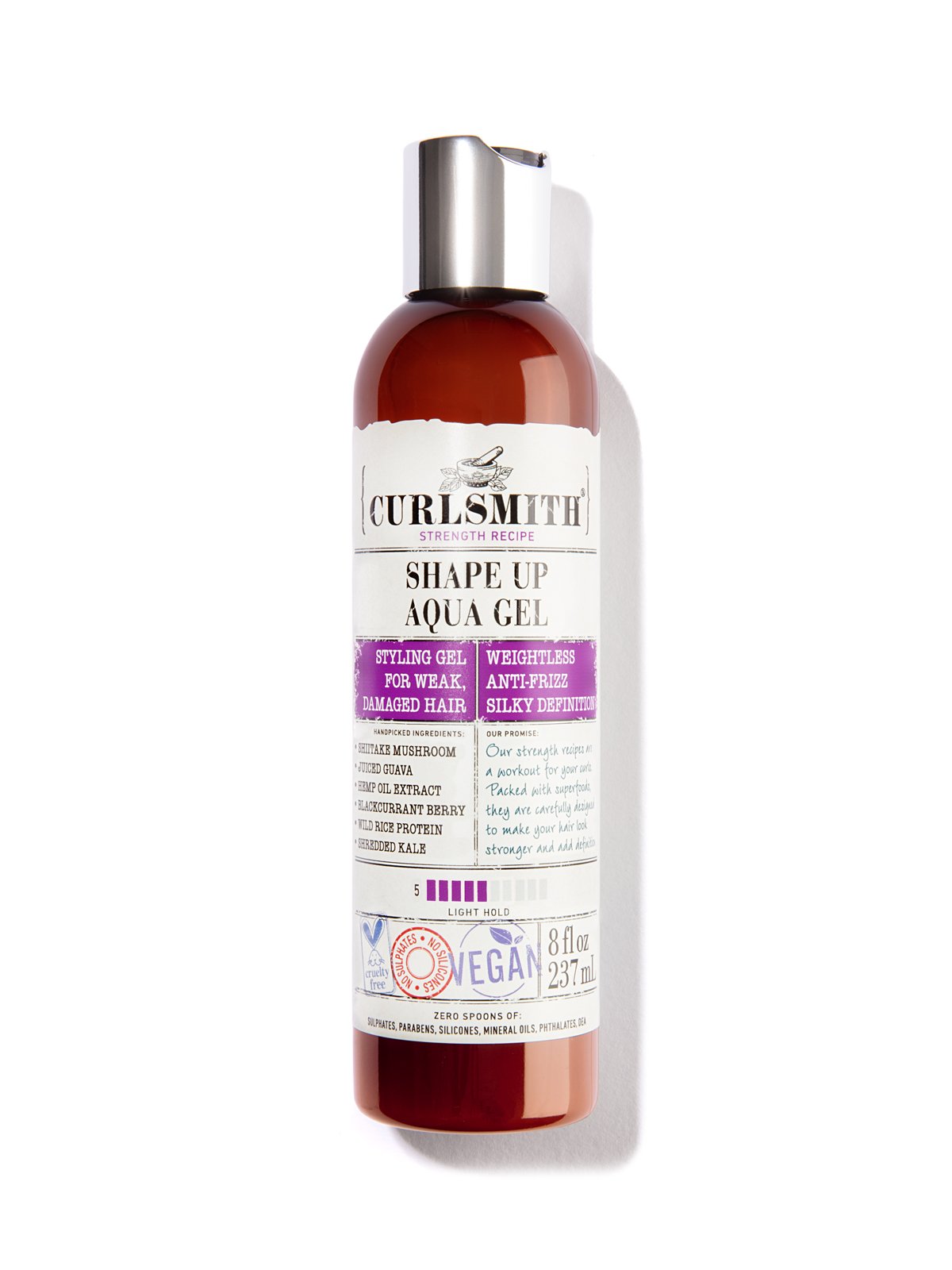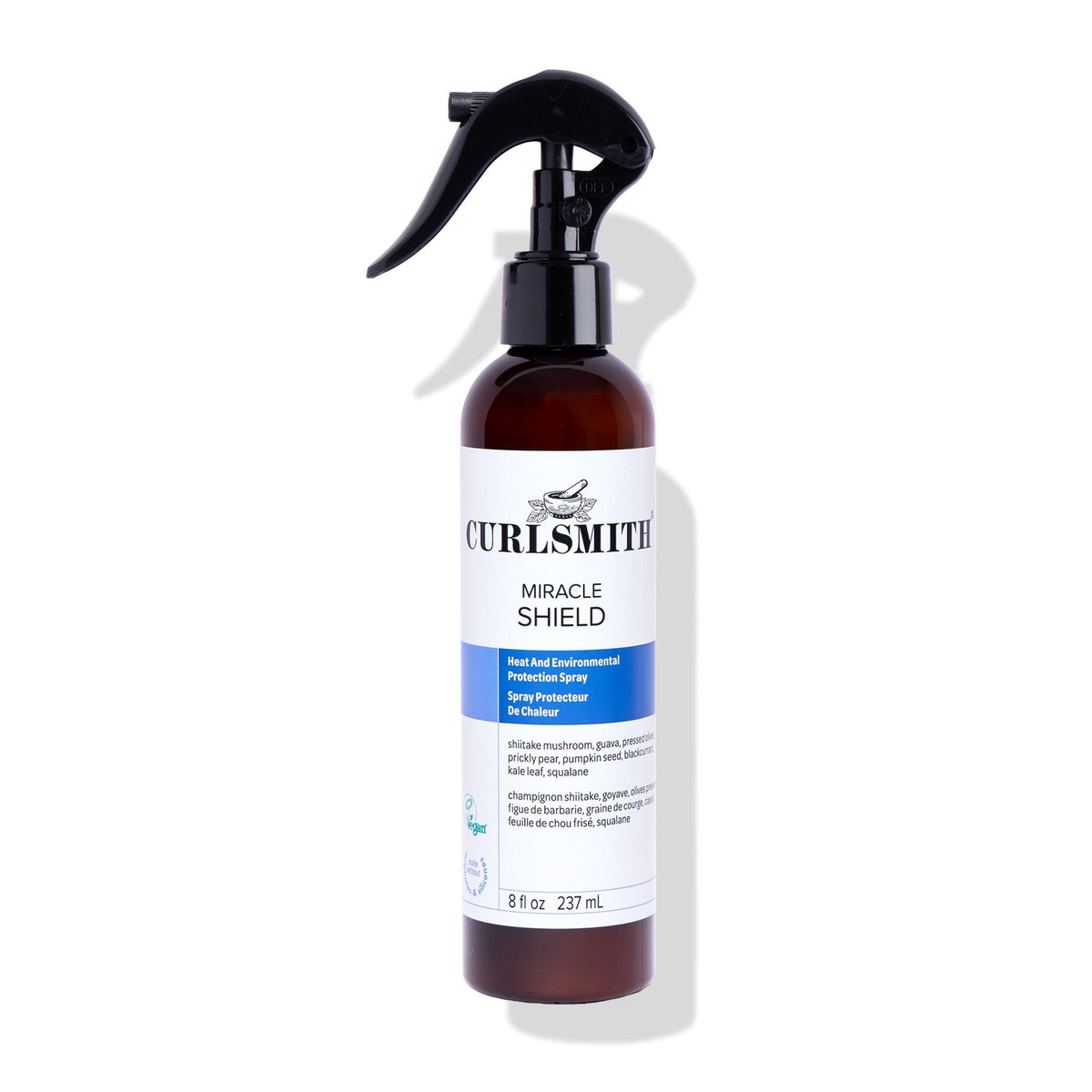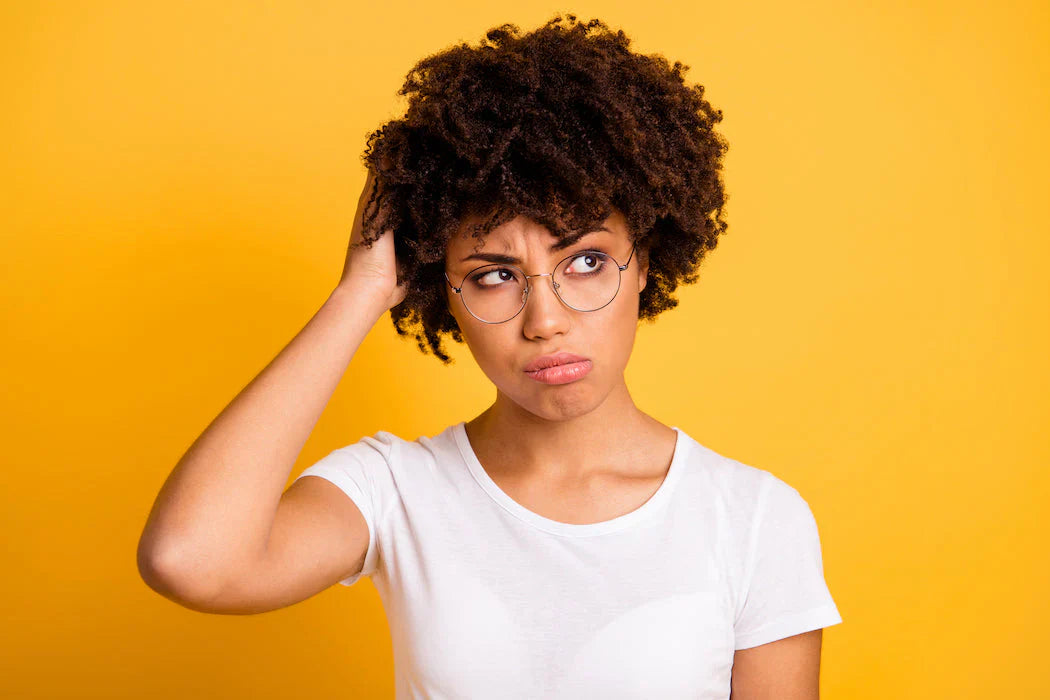
Which is better for our curls, air drying or diffusing? There are pros and cons to both drying methods and many people prefer one of the other. If you’re team air dry, you may be a low-maintenance type of curly and want to prevent heat damage. If you’re team diffuse, you may love achieving volume and shrinkage in your curls. We can all agree that we want to enhance our natural curls and maintain healthy hair. Whether you currently love to diffuse or air dry, let’s dive into the facts about both methods so you can determine which is best for your curls.
Table of Contents
- Heat Damage from Diffusing
- How to Safely Diffuse
- Damage from Air Drying
- How to Safely Air Dry
- Differences Between Air Drying vs Diffusing
Heat Damage from Diffusing
The biggest difference when it comes to air drying versus diffusing is the air temperature. When you air dry, your hair is drying naturally with room temperature air or with the air outside. Many people who prefer to air dry want to avoid potential heat damage from diffusing. While it’s true that heat can cause damage to the hair’s cuticle, if you’re using the proper diffusing techniques, heat protection, and hairdryer settings, you can maintain healthy hair with diffusing.
How to Safely Diffuse
The Curlsmith Miracle Shield Heat Protection Spray provides protection from heat up to 230 degrees C and protects against breakage. It’s suitable for all hair types and particularly beneficial for weak or damaged hair. It is silicone-free and contains a vegan thermal shield blend that not only protects from heat but other aggressors such as UV-rays, seawater, chlorine, color fading and pollution.

To avoid heat damage during diffusing, spray the Curlsmith Miracle Shield on clean, wet hair after your leave-in and follow with your styling products; can also be used on dry hair when refreshing. Diffuse using the Curlsmith Defrizzion Hair Dryer and XXL Diffuser. The far-infrared heat and porcelain ceramic features of the Defrizzion Hair Dryer help regulate heat and prevent heat damage. The heat is adjustable with a low, medium, and high setting. Even on the highest setting, the Defrizzion Hair Dryer is still gentle enough for curls and won’t damage the hair if the proper diffusing techniques are used.
Hovering the dryer around your hair at a distance is the safest way to diffuse. Once the gel cast starts to set, then you can incorporate pixie diffusing if you want to enhance your curl pattern and create volume.
Damage from Air Drying
Contrary to popular belief, air drying can actually damage the inner workings of the hair and can be more damaging than diffusing. A study found that natural air drying can cause damage to the hair’s cell membrane complex (CMC) when the hair stays wet for long periods of time. While excessive heat from hair dryers can cause more surface damage than air drying, using a hair dryer at a distance of at least 15 cm with continuous motion causes less damage than air drying naturally. The CMC is the material that “glues” the hair cells together. When the hair becomes wet, the hair shaft swells along with its CMC. Repeated cycles of wetting and air drying for long periods of time can be damaging. Hair is also weakest when it’s wet compared to when it’s dry, so it’s more at risk for breakage if friction occurs during air drying (like sleeping with wet hair), or putting your hair up in a tight hairstyle while it’s wet.
Curly hair is known to take a while to air dry due to the water content used while applying products, very moisturizing products and styling techniques for clumping the curls. Air drying naturally can take hours and even a full day for some people, especially those with high-density hair.
How to Safely Air Dry
If you prefer to air dry and want to avoid both surface damage and damage to the inner workings of the hair, you can air-dry your hair faster with certain techniques.
After washing, conditioning, and rinsing your hair, scrunch out excess water. Use a microfiber hair towel or T-shirt to blot excess water at the roots or loosely wrap your hair. Apply styling products, and spritz the lengths of the hair with water as needed. Apply stylers to wet and use your hair towel or T-shirt to “microplop,” or scrunch out excess water to reduce your drying time. Glaze another light layer of gel overtop if you feel some product was removed by the towel.
If you want volume while air drying, use root clips to lift the hair off the scalp or flip the hair from side to side throughout the drying process. Avoid going outside in wind, humidity, or very dry, cold air while air drying. It’s best to remain inside for most of the air-drying process if possible to avoid frizz.
Differences Between Air Drying vs Diffusing
Time & Convenience
The time it takes to air dry or diffuse are big factors when choosing the best method for your lifestyle. Dry time will vary based on your hair’s natural density (how thick it is) and your hair’s porosity (how damaged it is). High-density hair will take longer to dry compared to low-density hair. Very porous or damaged hair will dry quickly if the water is scrunched out of the hair after styling.
Dry time is heavily dependent on how much water you leave in your hair when styling, how heavy your styling products are, how thick your curl clumps are, and whether or not you use a hair towel to absorb excess water.
Low to medium density hair may take as little as 1 to 3 hours to air dry. Hair that is very thick, or high-density, can take upwards of 6 to 8+ hours to air dry.
When it comes to diffusing, it can take someone with low-density hair as little as 10 minutes to diffuse, whereas it could take up to an hour for someone with high-density hair to diffuse, especially if styled soaking wet.
Dry time can also depend on the temperature of your hair dryer and the design of the diffuser. The Curlsmith Defrizzion Hair Dryer uses far-infrared heat to reduce dry time without damage, and the 8-inch size of the XXL Diffuser covers more surface area, reducing dry time overall.
For those who don’t like the look of their hair while it’s air drying or don’t want to go about their day with “crunchy” curls, diffusing is more convenient. Because it’s best to wait and scrunch out the crunch, or gel cast, once dried, you would have to leave your hair looking stiff while air drying. By diffusing, your hair will be “finished” after styling and ready to go.
For those who don’t mind going about their day while air drying, or those that can air dry fairly quickly, air drying may save you time compared to diffusing. As mentioned previously, diffusing will add additional time to your styling routine.
There is an option to achieve the best of both worlds by diffusing for a few minutes to speed up the drying process, and then finish air-drying so you can go about your day. This can help to reduce frizz by “setting” the gel cast right away with diffusing, then allowing your hair to finish air-drying naturally.
Appearance
Air drying and diffusing produce much different results when it comes to the appearance of your curls. Depending on your desired results, you can determine which is right for your hair by considering the following factors.
Shrinkage
Diffusing is known to create much more curl shrinkage compared to air drying. Shrinkage refers to the tightening of your curl pattern, bouncing the curls up more once dried, causing your hair to appear shorter overall. For those with loose curls to wavy hair, you may want to enhance your texture by diffusing. If you prefer to retain your natural curl pattern, air drying will be ideal. The heat during diffusing also helps to “set” the hair in the scrunched position and the shape lasts longer. This is also why some get longer-lasting results from diffusing compared to air drying. Air drying can cause the curls to fall quicker after wash day, especially for those with loose curl patterns.
For those who want to reduce shrinkage or retain their length, air drying may be ideal because natural gravity will elongate the curls. There is also the stretch diffusing technique that is often used by those with coily hair to reduce shrinkage. Stretch diffusing involves gently pulling on the hair while the heat from the dryer sets it in that more elongated position. This creates a more dramatic elongation compared to natural air drying.
Definition
When it comes to definition, both air drying and diffusing can result in definition, depending on the products you use and your hair type. If you use a gel with hold, diffusing may result in more curl definition because diffusing sets the cast right away, reducing frizz that can develop as you move around while air drying. However, if you only use cream products and don’t use a gel with hold, diffusing will create frizz because there is no protective barrier or film on the hair to keep the definition in place. Using a strong hold gel such as the Curlsmith In-Shower-Fixer is the best way to reduce frizz and create max definition whether you air dry or diffuse.

Volume
Volume is one of the biggest differences in the appearance of your hair when it comes to air drying versus diffusing. Diffusing results in much more volume due to the diffuser design cupping the hair upwards and then heat setting it into place in that lifted position. The prongs on the Defrizzion XXL Diffuser also make it easier to reach the roots and lift the hair away from the scalp. Those with low-density or thin hair often prefer to diffuse in order to achieve more fullness overall. If you have high-density or thick hair and you’re looking to reduce fullness, air drying may be your best bet.
It can be more challenging to achieve volume when air drying because of the natural gravity that elongates the hair. Root clips can be used to lift the hair away from the scalp as the hair dries. This lift may not be as long-lasting though compared to using heat with diffuser prongs to lift the roots. While air drying, you can also gently flip the hair from side to side to dry each side of your head and create a bit of lift.
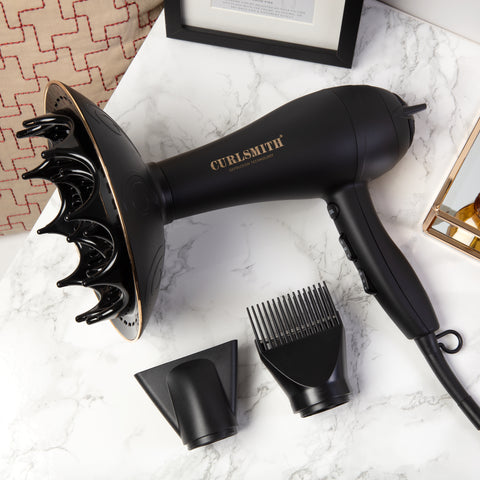
Frizz
Frizz can happen whether you air dry or diffuse, depending on your products, technique, and level of damage in your hair. As mentioned previously, more frizz may occur from air drying because diffusing sets the gel cast right away so frizz doesn’t have time to form. When you air dry, wind, movement, and touching your hair while it’s wet can cause frizz.
However if you are not using a gel with hold, or you are improperly diffusing you will get frizz from diffusing. Incorporate hover diffusing first to allow the cast to start to set. This gel cast protects the curls from frizz. Incorporate pixie diffusing, which is where you cup the hair into the diffuser bowl before turning the dryer on, then turn it off before moving to the next section. This reduces flyaways and prevents the curls from drying out of shape.
To reduce frizz while air drying, use a gel with hold and avoid touching your hair while it’s drying. It’s also best to stay indoors while air-drying if possible because wind, humidity, or very cold air can cause frizz. Overall, we want to avoid disturbing the curls too much while they dry.
Whether you air dry or diffuse, wait until your hair is 100% dry before scrunching out your gel cast to avoid frizz.
Other differences
Aside from the differences in damage level, time, and appearance between air drying and diffusing, there are a few other differences to consider.
There is a cost associated with purchasing a hair dryer and diffuser whereas air drying is free. The Curlsmith Defrizzion Hair Dryer includes the XXL Diffuser attachment that fits perfectly so there is no need to purchase a universal diffuser attachment separately like with other traditional hair dryers. It also comes with a concentrator nozzle and root pick attachment.
Another factor when considering if air drying or diffusing is better for you is accessibility and coordination. Some people who have limited mobility or neck and back pain may not be able to perform diffusing techniques or hold a hair dryer. The Curlsmith Defrizzion Hair Dryer weighs about 4 lbs, which is lightweight compared to many hair dryers on the market. It also features prongs on the back of the hair dryer so it can stand up by itself for hands-free drying.
Which is best?
Overall, you must consider various factors when determining which method is best for your curly hair. As discussed, considering the health of your hair, desired look, and convenience all come into play. You can incorporate both air drying and diffusing in your routine depending on how much time you have, or use both within the same wash day. Some people like to diffuse for a bit and then finish air-drying, whereas others may choose to air dry first and then diffuse at the end of their routine. Trial and error is key!
With diffusing, you have more control over how your hair turns out. Diffusing allows you to manipulate the hair more by enhancing your curl pattern or texture, creating volume, and setting the hair into place so it lasts. Diffusing improperly, using a hair dryer that gets too hot, or not using heat protection can result in surface damage to the hair’s cuticle.
With air drying, you can influence the outcome some with the various techniques discussed here, but overall air drying retains your hair’s natural texture and appearance. Air drying does not cause any cuticle damage, however, some damage may occur over time to the inner workings of the hair with repeated, prolonged air-drying sessions.
Experiment to find out what works best for your hair type and your desired results.
